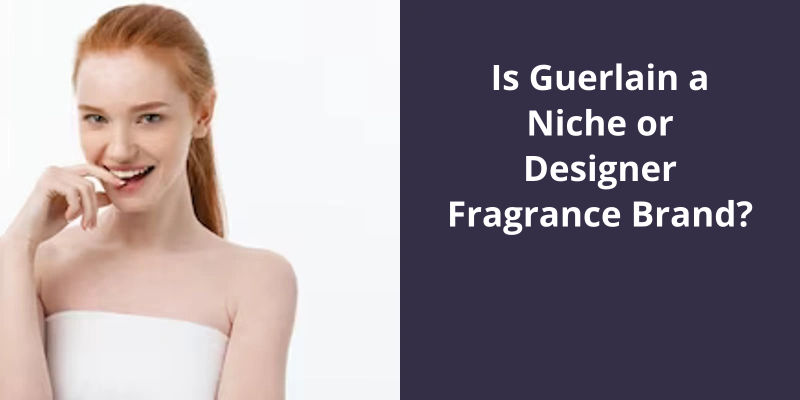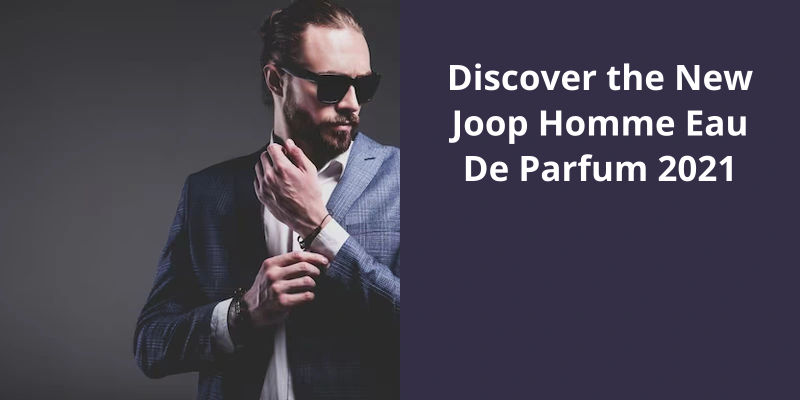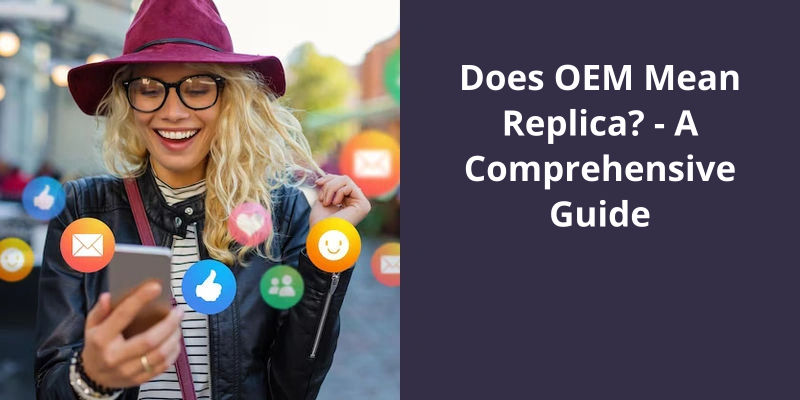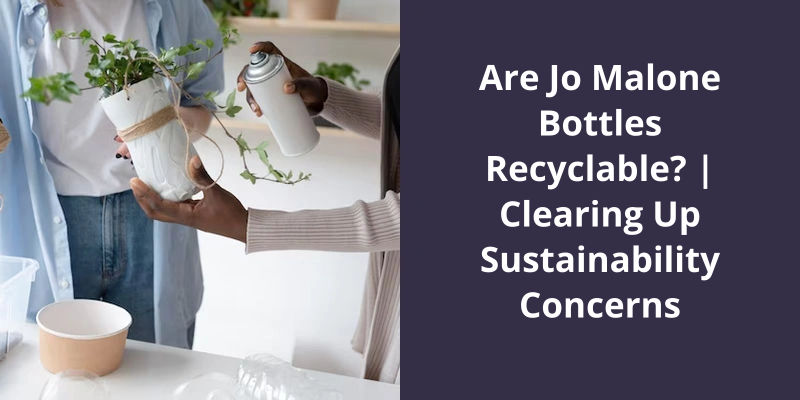Guerlain is a designer fragrance brand. Founded in 1828 in France by Pierre-François Pascal Guerlain, it’s one of the oldest perfume houses in the world. While it does offer high-end and exclusive perfume collections which may make it seem like a niche brand, it is, in fact, considered a designer brand because a large portion of their creations are widely accessible and mass produced for a broader public marketplace. Many of their fragrances are famous and widely recognized, testament to their popularity and reach, further solidifying the brand’s status as a designer label.

What Kind of Brand Is Guerlain?
The brand was founded in 1828 by Pierre-François Pascal Guerlain, who initially started as a distiller of aromatic plants. Over time, he discovered a talent for creating fragrances and began to develop his own scents. Since then, the brand has continuously evolved and expanded into the cosmetics and skincare industries.
One of the key aspects of Guerlains brand identity is their commitment to using high-quality, natural ingredients in their products. They prioritize sustainable sourcing and are dedicated to minimizing their environmental impact. This has gained them a loyal following of consumers who prioritize eco-consciousness and seek out luxury products that align with their values.
They’re particularly well-regarded for their skincare line, which is designed to address a range of concerns such as aging, hydration, and uneven skin tone. The brand has also gained a reputation for their unique packaging designs, which often incorporate luxurious materials such as gold and crystal.
Guerlain has a rich history in the world of fragrance, with many iconic perfumes that have stood the test of time. Their fragrances are often described as elegant, complex, and sophisticated. One of their most renowned scents is Shalimar, which was first introduced in 1925 and remains one of their best-selling fragrances to this day. Other popular Guerlain perfumes include Jicky, Mitsouko, and LHeure Bleue.
In recent years, Guerlain has also gained attention for their collaborations with popular artists and designers. For example, they worked with French fashion house Lanvin to create a limited-edition fragrance, as well as partnering with jewelry designer Lorenz Baumer to develop an exclusive line of fragrances. These collaborations have helped to keep the brand fresh and relevant, while also maintaining their commitment to quality and luxury.
The History and Evolution of Guerlain’s Fragrance Line
- 1828 – Pierre-Francois Pascal Guerlain opened his first perfume boutique in Paris.
- 1853 – The company received it’s first prestigious commission from Empress Eugenie.
- 1889 – Jicky, Guerlain’s first modern scent, was introduced.
- 1906 – Jacques Guerlain designed his first fragrance, Après L’Ondée.
- 1912 – Jacques Guerlain created L’Heure Bleue, inspired by the twilight hour.
- 1921 – Shalimar, one of Guerlain’s most iconic fragrances, was launched.
- 1937 – Mitsouko, a scent inspired by a Japanese heroine, was introduced.
- 1979 – Nahéma, a floral oriental scent, was created by Jean-Paul Guerlain.
- 2003 – L’Instant de Guerlain, a modern floral fragrance, was launched.
- 2011 – Guerlain launched their first unisex fragrance, called L’Homme Idéal.
As a renowned beauty and fragrance brand, Guerlain doesn’t just focus on producing high-quality products, but also on embodying important values. From preserving biodiversity to innovating sustainably, the company’s commitment to ensuring a positive impact on society shines through in all that they do. Additionally, Guerlain recognizes the urgent need to take action against the growing climate crisis, prioritizing efforts to reduce their environmental impact. Through these efforts, Guerlain is setting an example for other beauty brands to follow and proving that creativity, luxury, and sustainability can all work in harmony.
What Are Guerlain Values?
Guerlain is a luxury brand that embodies elegance, sophistication, and excellence. Established in France in 1828, Guerlain has been renowned for it’s high-quality yet timeless fragrances, cosmetics, and skincare products. However, beyond it’s luxurious offerings, Guerlain stands for values that go beyond profit. Guerlain values sustainability, innovation, and social responsibility. The company recognizes the impact of it’s operations on the environment and society, and it aims to contribute positively to both.
One of the core Guerlain values is the protection of biodiversity. Guerlain recognizes that the ingredients it uses come from nature and are interconnected with ecosystems. The company is committed to limiting it’s ecological footprint and preserving biodiversity by sourcing raw materials responsibly, using sustainable packaging, and partnering with organizations that promote the protection of endangered species. For instance, Guerlain has partnered with the TerraCycle organization to create refillable perfume bottles and promote a circular economy.
Guerlain also values taking action for the climate. The company recognizes that climate change is one of the most pressing global issues, and it strives to contribute to it’s mitigation and adaptation. Guerlain commits to reducing it’s greenhouse gas emissions by implementing energy-efficient measures, using renewable energy sources, and optimizing it’s logistics chain. Furthermore, Guerlain supports reforestation projects and promotes sustainable agriculture practices to help combat deforestation and mitigate the effects of climate change.
Lastly, Guerlain values it’s impact on society. The company recognizes that it’s operations affect not only the environment but also the communities where it operates. Guerlain aims to create positive social and economic impacts by supporting local communities, promoting diversity and inclusion, and ensuring safe and fair labor practices. Guerlain is also committed to preserving cultural heritage and promoting the arts through various initiatives, such as sponsoring museums and artists.
These values reflect the companys commitment to contributing to a more sustainable and equitable world. Guerlains efforts towards protecting biodiversity, promoting innovation for sustainability, taking action for the climate, and having a positive impact on society demonstrate that luxury and responsibility can coexist and that companies can lead the way towards a more sustainable future.
In terms of the beauty industry, Guerlain faces strong competition from several established rivals. These companies offer similar products and services, making it difficult for Guerlain to stay ahead of the competition. We’ll take a closer look at who these competitors are and what sets them apart from Guerlain.
Who Are Guerlain Main Competitors?
Guerlain is a luxury perfumery and cosmetic brand that’s been around since 182With over 190 years of excellence, Guerlain has established itself as a leading contender in the beauty industry. However, they face stiff competition from several other established brands. Some of the main contenders in the beauty industry include Johnson & Johnson, Henkel, LOréal, and AmorePacific.
Johnson & Johnson is a renowned global healthcare brand that’s pitted against Guerlain in the beauty industry. With over 130 years of experience in the industry, Johnson & Johnson has a wide range of quality products that cater to a massive customer base. They’ve created a strong brand reputation that sets them apart from other competitors.
Henkel, a German multinational chemical and consumer goods company, is another competitor of Guerlain. Henkel has dominated the market for many years, creating a niche with it’s impressive lineup of quality products. Henkel boasts several brands that are well known globally, including Schwarzkopf, Persil, and Pritt. Their extensive reach and quality product range makes them a formidable competitor for Guerlain.
LOréal is a French multinational cosmetics company that’s created a strong presence in the market. They offer a range of products including hair care, skin care, perfume, and make-up. LOréal ranks high among Guerlains competitors due to their massive global presence and their dedication to producing quality products.
Another significant competitor to Guerlain is AmorePacific, a South Korean cosmetics company. AmorePacific is recognized for it’s use of innovative technology and high-quality ingredients in the production of skincare and cosmetic products.
The acquisition of Guerlain by LVMH marked a significant milestone for the family-owned brand. It not only elevated the company’s status in the luxury goods industry but also ensured financial stability for the Guerlain family. In the years that followed, their net worth continued to grow, cementing their position as one of the wealthiest families in the world. Let’s take a closer look at their fortune and how they’ve managed to maintain it over the years.
How Much Is the Guerlain Family Worth?
The Guerlain familys net worth has been a point of interest for many investors and luxury goods enthusiasts. The family is known for their success in the perfume and cosmetics industry, thanks to their internationally renowned brand, Guerlain. In 1994, Jean-Paul Guerlain, the last family member to oversee the business, sold the brand to LVMH for an estimated $1.37 billion. This transaction left the family with a net worth of approximately 2 billion euros.
Their success has been driven by their emphasis on using high-quality ingredients and unique fragrances, which have drawn in a loyal customer base. The familys legacy in the cosmetics industry can be traced back to the mid-1800s when Pierre-Francois Pascal Guerlain founded the first Guerlain perfume boutique in Paris. Since then, the company has expanded worldwide, and it’s products have become synonymous with luxury.
Even after the sale of the brand, the Guerlain family remains an influential force in the business. They continue to have a significant stake in LVMH, the luxury goods conglomerate that purchased Guerlain. This alliance enables the family to have a say in the direction of the brand and allows them to capitalize on LVMHs resources and wealth.
The Guerlain familys fortune has led them to be active philanthropists, supporting various causes such as environmental conservation, animal welfare, and education. They’ve established foundations for these causes and donated vast sums to charitable organizations worldwide. The familys commitment to philanthropy further cements their legacy of giving back to society.
The familys legacy dates back to the 1800s when Pierre-Francois Pascal Guerlain first founded the brand. The sale of the company to LVMH in 1994 left them with a fortune of approximately 2 billion euros. The family continues to play an influential role in the cosmetics industry and remain philanthropic, supporting various causes worldwide.
Conclusion
In conclusion, the question of whether Guerlain is considered a niche or designer fragrance brand is subjective and open to interpretation. While some may argue that the brand's long-standing history and widespread availability classify it as a designer brand, others may argue that it’s use of high-quality, unique ingredients and emphasis on artistic creativity deem it niche. Ultimately, it’s up to individual perception and preference to determine where Guerlain falls on the fragrance spectrum.





